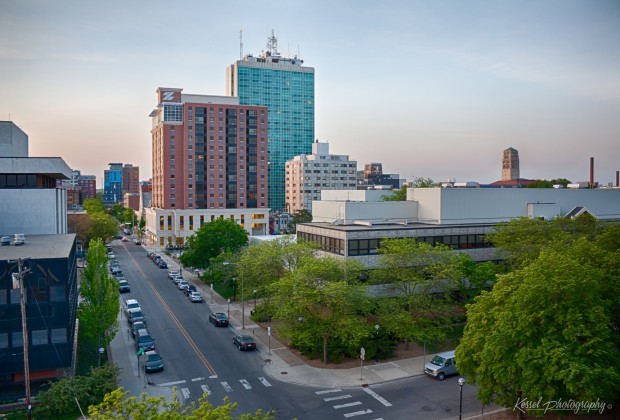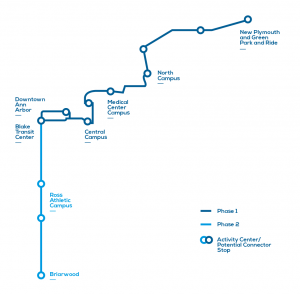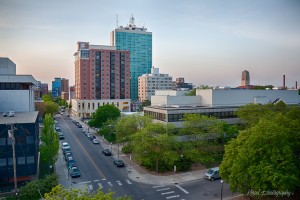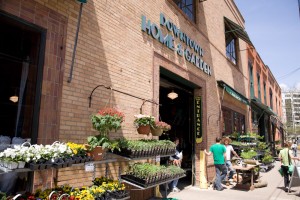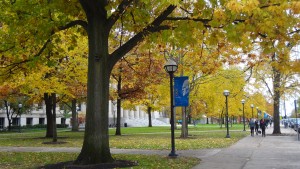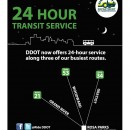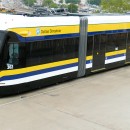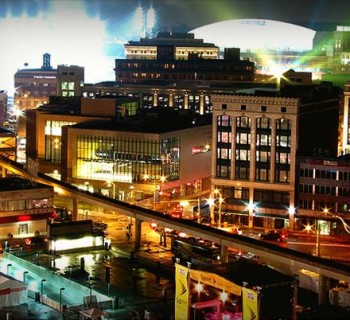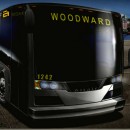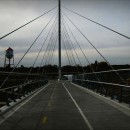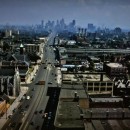The University of Michigan recently released its plans for the Ann Arbor Connector: a proposed light rail transit system that would connect U-M’s three campus hubs--north, central and south campus within the City of Ann Arbor.
AA Connector Proposed Route Map
The questions about where, when and how much have been covered (here, here and here), but I couldn’t help but wonder… why does this project make sense in Ann Arbor, a modest-sized city in a state where culture around public transit has lots of room for improvement?
The answer is simple. The University of Michigan.
College campuses are the epitome of traditional urban design, planning and architecture and are one of the few places outside major cities like New York and Washington D.C. where owning a car is not just optional, it’s highly impractical. For the same reasons that an auto-dependent lifestyle is atypical, public transit works great in these places.
Let me break down the three main reasons why college campuses and light rail are a match made in urban planning heaven:
Density. With so many students, faculty and staff members living in close proximity to one another—whether it be in a dorm on campus or in a house or apartment nearby—the density of people means that there are enough riders to support light rail, which requires a large amount of riders to be efficient.
Transit is particularly important in college towns where the campus is split among a few major hubs. If the University of Michigan was made up of one large campus where all of the activity took place and everything was within relative walking distance, public transit might not be required. However, like many schools, the campus is split up into a few large hubs, creating a need to frequently travel between those hubs—north, central and south campus.
There’s a mixture of uses. Another thing that makes campus life such a great match for light rail is that places to live, study, work and have fun are all mixed together. Driving and parking a half dozen different places throughout your day from home, work, school, appointments and to run errands isn’t necessary.
For example, a person can take a train from their apartment in the morning to work, walk to lunch or a meeting, and take a train home—stopping at the store between the station and their apartment. Transit works better with this setup because you can get much more out of each trip.
It’s easy, safe and comfortable to walk. One of my favorite transportation planning rules is, “every time you’re a transit user, you’re also a pedestrian.” College campuses are designed with a focus on walkways, green spaces and minimal interaction between walkers and vehicular traffic. Light rail looks much more attractive when you know that walking to and from the station will be safe and comfortable.
Take these three points, pair them with a bus system that is already maxed out, and light rail makes a lot of sense.
In case you hadn’t guessed it, using light rail to connect college campuses isn’t a new idea. In St. Louis, the Metrolink light rail connects the University of Missouri North Campus, the St. Louis College of Pharmacy and the Washington University Medical School. The light rail system in Houston, Texas also connects a bunch of campuses in the area. And these are two examples of many.
How can you get involved?
Project partners—the University of Michigan, the City of Ann Arbor and the Ann Arbor Area Transportation Authority—all say that public engagement will be a key component to moving the concept forward.
There are already two public meetings scheduled later this month to discuss the project. Here are the details:
AA Connector Public Meetings
Thursday, March 24, 2016
11 AM to 1 PM at the Ann Arbor Downtown District Library on Fifth Ave. and
6 to 8 PM at the Traverwood Branch Library
You can also visit the AA Connector website to learn more and click on “Connect” to join the project email list to stay up-to-date on all of the project’s happenings.


